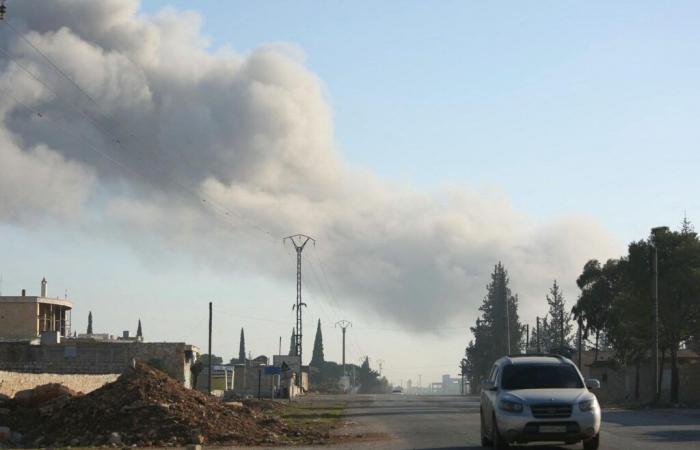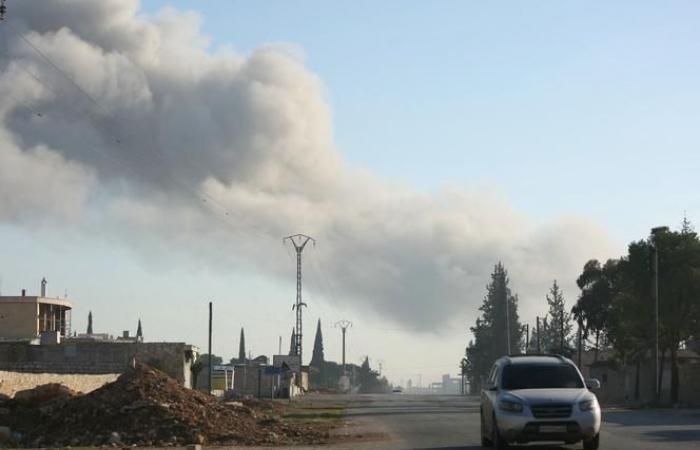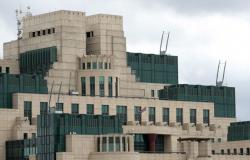Jihadists and their allies, who are leading a vast offensive in northwest Syria against the regime, approached the city of Aleppo on Friday, which they bombarded, according to the Syrian Observatory for Human Rights. man (OSDH) and the Syrian state media. These are the most violent clashes since 2020 in northwest Syria, where the province of Aleppo, largely in the hands of Bashar Al-Assad's regime, borders the last major rebel and jihadist stronghold of Idlib. .
Fighters from Hayat Tahrir Al-Sham (HTC, Levant Liberation Organization) and groups allied to them, including some close to Turkey, arrived Friday morning “ almost 2 kilometers away » of Aleppo, Syria's second city, said Rami Abdel Rahmane, director of OSDH, an NGO based in the United Kingdom but which has a vast network of sources in Syria. Still according to the OSDH, the combatants “took control of more than 50 towns and villages in the Aleppo and Idlib regions” which were held by the regime.
Read also | Article reserved for our subscribers In cards: the game of foreign influences in Syria
Read later
More than 14,000 people displaced, according to the UN
According to the official Syrian agency SANA, they bombed the big city for the first time in four years, targeting the university campus where four civilians were killed. In total, the death toll from the fighting since the start of the offensive launched on Wednesday stands at at least 242 dead, most of whom are combatants, the NGO said. The OSDH reported 24 civilians killed, including 19 in strikes by Russian aircraft, an ally of the regime, on rebel areas.
Jihadists and their allies cut off the vital road linking the capital Damascus to Aleppo on Thursday. The UN Office of Humanitarian Affairs (OCHA) said that “more than 14,000 people, almost half of whom are children, have been displaced” due to the violence. The Syrian regime has regained control of a large part of the country, with the support of its Russian and Iranian allies, since the outbreak in 2011 of the conflict which left more than half a million dead and displaced millions. people.
Where is the war in Syria today? Understand in three minutes
Like Tunisia, Libya or Egypt, in 2011, Syria was one of the countries whose authoritarian power was destabilized by the “Arab Spring”. The dictatorship of the Bashar Al-Assad clan, in power since the 1970s, bloodily represses the peaceful demonstrations led by part of the Syrian population to demand more freedom.
See also | Eight years ago, Syria rose up… How the country descended into war and terrorism
Read later
In the process, many soldiers defected and created the Free Syrian Army (FSA), which became the main component of the rebels determined to take up arms to overthrow the regime.
In the years that followed, the opposition to Bashar Al-Assad gained ground, conquering important cities in the territory. To the political conflict is added the religious and ethnic conflict, because the rebels are a heterogeneous group, made up of militias of opponents of the regime, religious and ethnic minorities like the Kurds, as well as radical Islamist groups, like the organization Islamic State (IS). This will take advantage of the instability to conquer an important territory. The rise of the Islamist group will eventually convince foreign powers to intervene in the conflict.
In 2019, ISIS was defeated in Syria, and the regime of Bashar Al-Assad recaptured two-thirds of the territory. The opposition is gathered in the north-western province of the country. The front lines have been frozen ever since.
In this video, we look back at the major moments of the Syrian conflict up to the current situation. To date, it is estimated that the war has left more than 500,000 dead. To better understand what life is like in Syria today, we invite you to read the report below.
Read also | Article reserved for our subscribers Syria: trip to a bloodless country
Read later
“Understand in three minutes”
The explanatory videos that make up the “Understand in three minutes” series are produced by the Vertical Videos department of the Monde. Broadcast primarily on platforms such as TikTok, Snapchat, Instagram and Facebook, they aim to put major events into context in a short format and make the news accessible to everyone.







